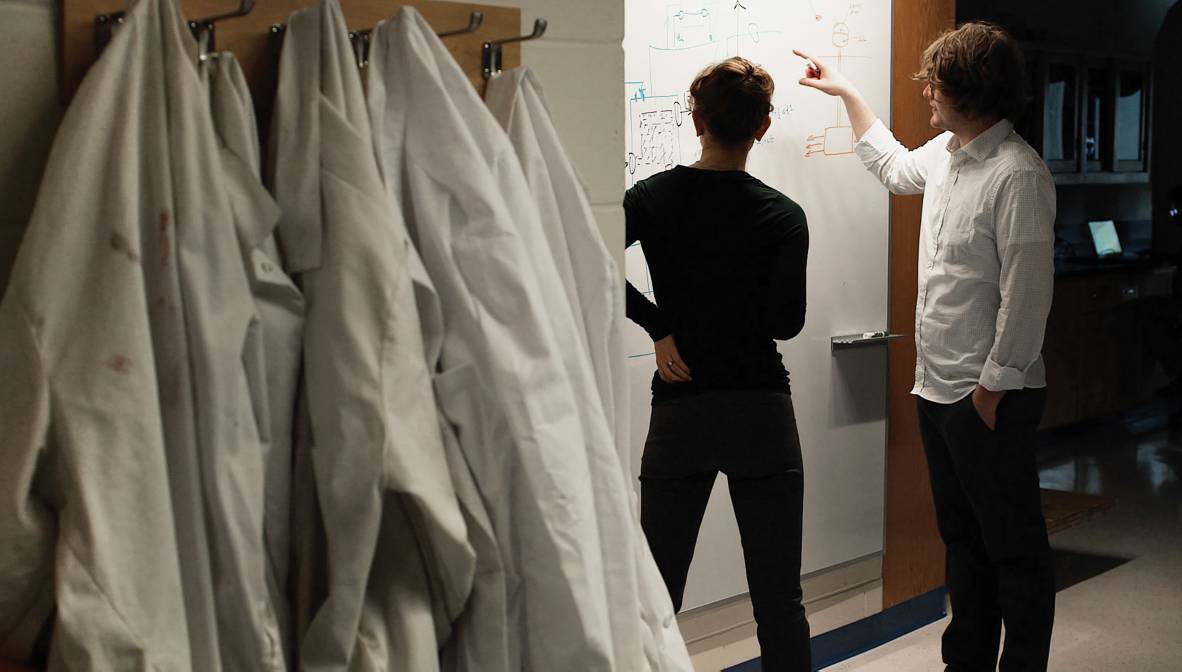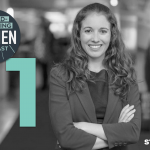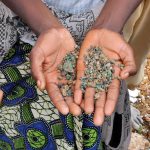
Transatomic Power is commercializing a design for a new type of nuclear reactor that can take the stockpile of nuclear waste that exists in the world, break it down, extract almost all of its remaining energy, and turn it into an enormous amount of clean electricity. If the technology were deployed at scale, it could provide clean energy for the entire world for the next 72 years. Yes, years. The implications are enormous and could revolutionize the entire energy industry. We spoke with Co-founder and CEO Dr. Leslie Dewan about her groundbreaking innovation and the future of the nuclear industry.
What inspired you to start this company? How did you conceptualize this and then find the courage to really go for it?
Leslie Dewan: There were a few factors that all came together at once for this to happen. My co-founder, Mark Massie, and I started the company when we were midway through our PhDs at MIT. We actually first started thinking of it when we were studying for our qualifying exams, which are week-long exams that you take midway through grad school. It was a really stressful time and we were studying for months on end, fourteen hours a day, and then we finished, we passed, and we were like, “Well, we have all of this free time now so we should do something really interesting, and we’re probably the smartest that we’ll be for a while so let’s make it big.”
The other piece that came into it is that Mark and I, we’re both environmentalists and we feel like the world needs carbon-free electricity. We think that nuclear power is an essential part of this mix alongside solar, wind, hydro, and geothermal. To meet the world’s growing energy demands, you have to include nuclear in the carbon-free portfolio. We wanted to develop a type of nuclear reactor that the public could embrace and that people could really get behind. To do that, we wanted to tackle the issues of fear head-on regarding safety and see if we could come up with new solutions that would make it more acceptable.
We started diving into the tech aspects and poking around and running a whole bunch of simulations and, six months or so later, we came up with a basic sketch of the design. That was back in 2011. We spent several years refining that and then raising funding and now we’re doing some experimental tests with it to bring it closer to fruition.
At any time have you felt fear in starting a company that has such an ambitious goal or have you just been confident the entire time in what you’re doing?
LD: I’m confident in it. There certainly have been plenty of people who tell me that I’m crazy for doing this, but I think it’s possible. Technology-wise, it’s possible. The really heavy risks are on the regulatory side; it’s very tricky in the US to build prototypes for advanced nuclear reactors just because of the way the laws are structured. So, the heavy lifting is really from the political standpoint, which is left to me as an engineer.
It’s just an exciting time in the industry as a whole. In addition to Transatomic, there are a number of really great nuclear reactor designs that people are working on right now. There’s this wonderful momentum building and there’s this wonderful excitement about all of the new things that people can do with nuclear power – it’s just a really fun time to be in this field.

“There’s this wonderful momentum building and there’s this wonderful excitement about all of the new things that people can do with nuclear power.”
What are the major obstacles impeding the adoption of your technology?
LD: The biggest obstacle by far is political. Right now in the United States, there’s no rapid pathway for commercializing a new type of nuclear reactor. The Nuclear Regulatory Commission is very good at licensing and evaluating the older types of product designs, but it’s not in its mandate to even look at the advanced reactor designs. It’s not like the NRC is bad, it’s just not in its job description right now to look at the advanced reactor designs. There’s a hurdle when we say, “We need a regulatory system that can allow us to do this and we need political support to basically influence the NRC and influence the regulatory bodies to do this.” So, it’s really a political lift.
Science-wise, the science is all there. We’re running lab-scale tests just to verify our component lifetime, but engineering-wise, it’s straightforward to roll out. The tricky spot is finding the right place to start it; finding the right pathway by which to regulate it safely.
How can your technology help alleviate some of the traditional concerns about nuclear power?
LD: A good way to talk about this is to talk about where the design came from in the first place. Our design was inspired by work done at the Oak Ridge National Lab in Tennessee back in the 1960s. They developed a type of nuclear reactor called a molten salt reactor that’s extremely safe. It basically was incapable of melting down. If there were an accident, even if there were a loss of external electric power, even if there were no operators on site, their reactor design was able to shut itself down safely and it would freeze solid over the course of a few hours. Their type of reactor, though, was fairly expensive and it had a low power density. It was pretty bulky and it was before there had been any commercial nuclear accidents so the technology was abandoned, basically. People said, “Well, why would we pay so much more for a safer reactor when clearly we don’t need a safer reactor?”
So what my co-founder and I were able to do – we looked at that older design (the extremely safe design) and we were able to change some of the materials and the geometry in the reactor core to make it much more compact, cheaper, and able to consume nuclear waste while keeping all of the same safety methods. We go at the safety issue head-on by basically bringing back this older, much safer design, and we’re addressing the risk issue because with our new materials and layout, it’s able to consume and break down the long-lived components in used nuclear fuel.

Best-case scenario, we have full-scale adoption of your technology. What sort of implications are we looking at?
LD: One of the crazy things is the sheer amount of energy that’s left in nuclear waste. Worldwide right now, there’s about 270,000 tons of used nuclear fuel that exists. If you’re able to take that fuel and put it into waste-burning reactors like Transatomic’s, you could produce enough electricity to power the entire world for 72 years, even taking into account increasing electricity demands. It’s just a staggering amount of energy, and what I ultimately want is for people to stop thinking of this nuclear waste as a liability that needs to be disposed of and buried underground, and think of it as a resource and a source of energy that we can tap and use to generate a staggering amount of carbon-free electricity.
Also, the good thing is that the process by which you extract the energy from the waste reduces its radioactive lifetime. Basically, you can think of it as long-lived waste; it’s so long-lived and so dangerous in part because it has so much energy left in it. By extracting the remaining energy, we’re reducing its radioactive lifetime from hundreds of thousands of years down to hundreds of years for the majority of the waste. It’s still a long time, but it’s more of a human timescale rather than a geological timescale of hundreds of thousands of years.
How would power plants that are using your technology interface with the levels of wind and solar energy coming onto the grid?
LD: I see them working in parallel basically. I think it’ll be driven a lot by what types of battery technology get developed over the next decade or so because if there’s better battery storage, then a lot of electricity generation will shift to whatever the cheapest means of electricity production is. If there’s very, very cheap solar, a lot more of it will be solar. If there’s very, very cheap nuclear (which is possible), then a lot of it will be nuclear. But I think no matter what, it will also end up being a mix of solar and wind and nuclear and hydro.
I see it as probably dividing up geographically because there are parts of the country where solar can be extremely cheap, parts of the country where wind can be very cheap, and then in other parts of the country where those two are more expensive, I see those regions being where nuclear can dominate.
If your technology were to grow at scale, would there be a role for natural gas in electricity generation? Would coal just become completely obsolete?
LD: Ideally, I’d want coal to become completely obsolete. I think that if we can get rid of coal, it will be universally good for the environment. Right now, according to the numbers we have, we can compete successfully with coal. We can be cheaper than coal.
Right now, natural gas is just so cheap in the US. It’s cheap to produce and it’s just ridiculously cheap to put up new natural gas plants. Looking at the numbers, I think it’d be hard for us to be cheaper than natural gas in the US if the rates stay the same. Internationally, natural gas is very expensive, so we can compete with natural gas overseas, but with fracking in the US, it’s harder. I feel like the very, very low natural gas prices are stifling new construction of many different forms of carbon-free electricity generation.

“What I ultimately want is for people to stop thinking of this nuclear waste as a liability…and think of it as a resource and a source of energy that we can tap and use to generate a staggering amount of carbon-free electricity.”
Are you focused on getting this implemented in the United States only or are you looking at other countries in which to potentially implement it?
LD: Within the US right now, there are a number of coal plants that are being shut down. We care about this being an alternative to coal or a replacement for the coal plants that are going offline in the US right now and as an alternative to the coal plants that otherwise would be put up internationally over the next several decades. In China especially, there are a staggering number of coal plants being built right now and if you look at the air pollution there, it’s just clear that they need an alternative. The world needs an alternative.
Do you think that we could successfully address the climate change issue without nuclear power of some type?
LD: No matter what, just by looking at the numbers, we need to have nuclear power as part of the portfolio if we want to stop climate change because otherwise there won’t be enough electricity.
So much of the rising electricity demands will be coming from China, from India, from some parts of Africa where there are people who are moving out of poverty and they need electricity to bring themselves to a higher standard of living.
You need to make an economic argument. You need to provide a very, very inexpensive source of electricity. You can’t ask people in developing countries to pay extra for carbon-free electricity, so you need to provide people with carbon-free electricity that is also cheaper than coal or the other fossil fuels in that country.
You are literally trying to revolutionize the energy industry. I assume that it takes a certain amount of courage to pursue a solution on such a large scale, and we need people like you to pursue their dreams and pursue these solutions on such a large scale if we’re actually going to make the changes that we need on this planet. Do you have any insights about your own qualities that have really helped you find the courage to tackle this problem on such a large scale?
LD: I don’t see it as an issue of being courageous or not. I can’t imagine anything else that I’d want to do more than this. It sounds so cheesy, but I really do feel extremely lucky every day that I can have a job that I absolutely adore where I’m using the skills that I have to potentially be very helpful for the world. I don’t think I have the benefit of enough introspection, possibly, to figure out what personal qualities I have. I’m just lucky enough to have a job that I really, really love.





